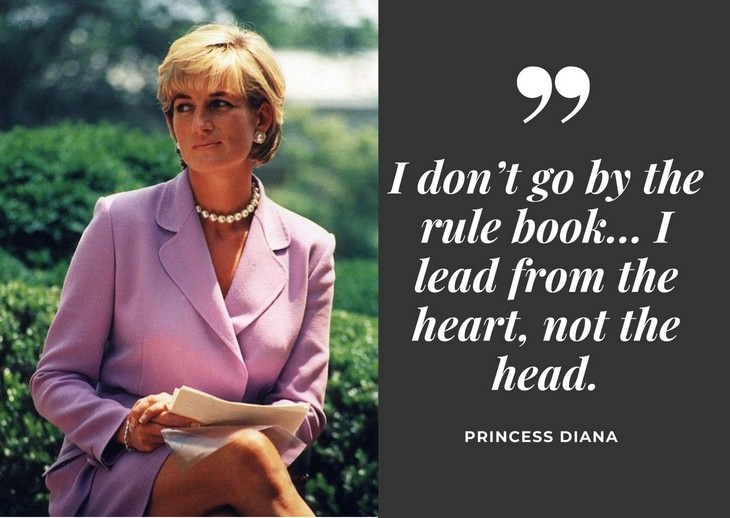No part of this website, including the blog content may be copied, duplicated or reproduced in any manner without the author’s permission.
Any information, materials, and opinions on this blog do not constitute therapy or professional advice. If you need professional help, please contact a qualified mental health practitioner.
Despite having evolved over a millennium, we are innately cavemen; our bodies and minds are not primed to deal with the heightened level of stimulation of the present day. Sleep is therefore even more important to reset, restore, and replenish our minds and bodies as intimately linked systems. Our ancestors lived in the jungle and didn’t have electricity, electronic gadgets, and the level of noise pollution we deal with. While they had their hunter-gatherer problems, they didn’t have to strive in the way that we do as a result of living in a capitalist society focused on productivity.
We live in a society where sleep problems are normalised, and no longer seen as insidious, and harmful yet they are. The dangers of lack of sleep cannot be underestimated as they are real. More recently, l have become aware that one can survive longer without food than they can do without sleep!
Both in my personal and professional life, l have encountered countless people who live on average 4 hours of sleep each night due to the nature of their jobs and careers. If there have deadlines etc, these hours could be even significantly less. I have encountered a highly successful man surviving on 4 hours of sleep working with colleagues in different time zones who fell asleep on the stairs as he couldn’t get himself to his bedroom; and a woman who fell asleep on the tube on the way her way to work, and woke up miles away from her destination. These are not isolated stories; they may sound funny, but looking closely, there is real sadness in how these people push themselves beyond capacity, without sleep, and their bodies just shut down.
On the contrary, lack of sleep makes one unproductive altogether, due to brain fogginess, tiredness, lethargy, reduced attention span, inability to retain information, and fatigue that is caused. Irritability and emotional sensitivity are some of the signs of poor sleep or a lack of sufficient sleep, which can lead to more complex mental and physical health problems. These behavioural and emotional changes can negatively impact interpersonal relationships.
Biological science suggests that the average amount of sleep for a healthy adult should be 7-8 hours; this is also dependent on several factors for example the level of daytime exertion, one’s physical health, etc. However, what’s crucial is the quality of sleep, not only the quantity. Work stress exacerbates poor sleep; I have met people who drag themselves to their office desk each morning powered by coffee or Red Bull- at times other narcotic stimulants as a way of coping with work stress which feeds into lack of sleep.
The human body and mind operate in the same way as a machine. It needs to be switched off, reoiled, serviced, and cleaned before it can be efficiently driven again, without causing you problems. If you keep pushing the machine without stopping it to do all the essential maintenance work, it collapses. Sleep helps our body and mind repair itself, recharge, replenish and reset. If you cannot give the body sufficient time to repair itself through sleep, it will fail.
Sleep as a psychosocial issue
Despite sleep problems being a complex that has roots in the social context, most people who visit GPs and other mental health practitioners such as psychiatrists are often diagnosed with insomnia, anxiety or depression (secondary to poor sleep) and prescribed hypnotics, antidepressants, antianxiety to help them sleep. This medical approach overlooks the problem which lies in the psychosocial – work stress and anxiety which lead to poor sleep. These are psychoactive medications which come with a whole host of unpleasant side effects, and one tends to become tolerant, needing higher doses. In therapy, it is important to address the root cause of sleep problems, address them as a psychosocial issue where adjustments can be made pragmatically, and also address the underlying “core beliefs” one may have created, which are typically around perfectionism and fear of failure.
CBT is a great model for addressing sleep problems as it gives the client both tools and psychoeducation. I wish some of these clients who end up medicated before could consider finding other ways they can minimise the work stress, and exercise sleep hygiene, so they can foster healthy sleep. Many a time there is a combination of stress and poor sleeping habits. Our minds work through repetition; if you stimulate your mind at night and it is used to being active instead of switching off, it will surely obey that command and you will find it difficult to find sleep at night. Many people who experience sleep disturbances or insomnia are hugely impacted by work-related stress. They often have demanding schedules and have the pressure to constantly be available which contributes to mental and physical arousal, making it difficult to asleep.
Contemporary life and stimulation
Our day-to-day life presents with so many mental and physical stimulations which naturally dysregulate the body from its natural homeostatic state, which contributes to poor sleep. Modern, fast-paced lifestyles are flooded with sources of stimulation, such as electronic devices, social media, work-related stress, and busy schedules, which do not allow for the body and mind to naturally regulate themselves. Electronic devices emit blue light that can suppress the production of melatonin, a hormone that regulates sleep-wake cycles. Some people end up being prescribed melatonin replacement (banned in the UK) as a way of replenishing their melatonin resources. However, as a side effect, this can also disrupt the natural sleep-wake rhythm and make it difficult to fall asleep.
Another issue that perpetuates sleep problems is the internet where there is constant access to information and communication through technology which creates a sense of urgency to catch up with the latest news. Fear of Missing Out (FOMO) is a savvy concept coined to describe the anxiety caused by the perpetual consumption of social media and the subsequent fear of missing out it creates. This is even more problematic for people who have busy lifestyles and only have the time to go on their social media at night when they get home. Some of the news one watches for example wars or any other distressing events around the world can also create anxiety, which heightens the body’s arousal even further, making it more difficult to sleep.
Sleep and the body’s regulatory system – window of the tolerance
When we are physically and mentally stimulated, we go into a state of hyperarousal (fight/flight) which is one of the automatic self-preservative modes (red zone) in response to real or perceived danger. When we are in the hyperarousal state, our bodies become dysregulated, and the parasympathetic nervous system produces stress hormone cortisol, and adrenalin in response to the need to fight or fight.
Along with this are physiological responses such as racing thoughts, heart racing, muscle tension, interruptions to the digestive system, and our minds becoming sharp and alert. One cannot fall asleep if they are in this state, as the danger alarm system is going off. Due to the arousal, one is likely to reach for their phone and watch TV which creates a vicious cycle. In order to be able to fall asleep, one needs to bring themselves back down into the state where they are calm and able to switch off.
Sleep as a normal mammalian process
All mammals sleep and some sleep longer than others. Humans need sleep too, and they cannot function optimally without good quality sleep. Babies sleep longer as it is necessary for their rapid growth and getting used to the environment outside the womb. Some babies experience sleep regression, which can be very traumatic for the parents to cope with, causing distress to both baby and mother. On the other end, older people tend to sleep more and for longer periods, as their bodies require more time to repair themselves. Sleep is innate, any disturbances to it will without doubt trigger other complex health issues- depression, anxiety, chronic fatigue, and other health problems. When we view sleep as a luxury, not a necessity, it undermines our health and innateness, which has foundations in sleep.
What happens when we sleep?
Sleep is not just a physical state of lying in a semi-conscious state. It is a mind-body experience where the mind is actively churning all the daytime material processing, and physiologically the body is repairing itself. While sleep hygiene is significant in developing healthy habits around sleep, what is even more important is understanding what happens during sleep, the significance of it, and how it aids to good mental health. It also helps us appraise the harmfulness of poor sleep, both physically and mentally.
A healthy sleep cycle has successive stages that are necessary for the body and mind’s ability to reset and restore itself.
Different stages of sleep:
- Stage 1: Non-rapid eye movement (NREM) sleep is divided into three phases each representing a deeper level of sleep. This cycle repeats multiple times throughout the night, with REM sleep occurring more frequently in the later stages of sleep.
- Stage 2: Rapid eye movement (REM).
Stage 1: Non-rapid eye movement (NREM) sleep
This is the transition stage between wakefulness and sleep. It is a light sleep stage where people may experience drifting thoughts and occasional muscle twitches. During the second stage, sleep gets deeper- the body temperature drops, the heart rate slows down, and brain activity decreases. This stage is also characterised by bursts of rapid brainwave activity.
The third stage of the non-rapid eye movement sleep is the deepest sleep stage, also known as slow-wave sleep (SWS). It is characterised by very slow brainwaves, and it is difficult to wake someone up from this stage of sleep. This crucial stage is where the body undergoes a restorative process such as tissue and organ repair and growth. People with sleep disturbances are less likely to experience this restorative sleep level, hence why they always feel tired, fatigued and lethargic.
Stage 2: Rapid eye movement (REM) sleep
This distinctive sleep stage is characterised by rapid eye movements, increased brain activity, and vivid dreaming as the brain is highly active. REM sleep is important for memory consolidation, learning, emotional regulation as well as emotional processing. When someone is struggling with a particular issue that may be emotionally burdening for them in their daily life (current or historic), it is in the REM sleep that the mind tries to process these emotions.
That’s why we tend to dream of things that may resonate with what we are experiencing or have experienced in life, although they may be distorted or ambiguous. During this stage, the body is typically paralyzed to prevent acting out dreams in a physical form. Another unique quality of REM sleep is that it is linked to creativity and problem-solving abilities. REM sleep is the quality sleep which is particularly beneficial to our mental and physical health. Lack of REM sleep or disrupted REM sleep patterns have been associated with mood disorders, anxiety, depression, chronic fatigue and other mental and physical health issues.
Sleep and dreaming
In the interpretation of dreams, Freud (1900) delved into dreams and the significance of sleep and dreaming as something that a healthy mind does, as according to him we dream to protect sleep and process. Freud viewed the capacity to dream as healthy, and dreaming as a way of using the psychic energy which is translated into images. He viewed dreaming as a manifestation of the unconscious, considering nightmares and other sleep disturbances as well as interruption of dreaming as a sign of psychopathology.
Freud viewed dreams as holding one’s wishes, desires, conflicts, and other aspects of ourselves we cannot readily make sense of in the conscious state. He considered dreaming as a state where our conscious, unconscious and subconscious, are porous, and there is an interaction between these three parts of our psyche and a consolidation of them. With this happening in the sleep state, repressed wishes, desires, and conflicts are to be found not only in the latent, but manifest material. For him, dreaming was “The royal road to the unconscious”. He considered dream interpretation a significant part of any psychotherapy that is intended to make the unconscious conscious. Although not backed by empirical evidence, Freud’s ideas on sleep and dreaming would fit the scientific explanation of what sleep is and how it is beneficial in emotional processing, problem-solving and creativity.
Ways of improving sleep
Poor sleep hygiene:
Irregular sleep schedules, excessive use of electronic devices before bed, a disruptive sleep environment, or consuming stimulating substances like caffeine or nicotine close to bedtime can all disrupt sleep and should be completely avoided. Have a sleep routine and engage in meditative exercise to regulate your body and allow it to rest.
Stress and anxiety:
High levels of stress or anxiety can make it difficult to fall asleep or stay asleep. Minimize stress in your day-to-day life and give yourself time to rest and replenish your internal resources. When you are less stressed and not anxious, your body is in the green zone of the WOT and you are likely to find sleep easily.
Medical conditions:
If your sleep problems are persistent despite how much you try to exercise sleep hygiene, make sure you get checked for certain medical conditions such as sleep apnoea, restless leg syndrome, or hormonal imbalances.
Mental health disorders:
Conditions like depression, anxiety disorders, post-traumatic stress disorder (PTSD), or bipolar disorder can disrupt sleep patterns. If you tend to ruminate at night and find it difficult to sleep, there could be an unresolved issue that needs attention.
Medications, illicit substances and alcohol:
All these are psychoactive and they act on the brain which inhibits sleep. Certain medications, such as antidepressants, stimulants, or certain asthma medications, can affect sleep quality. Taking illicit substances recreationally or habitually can also cause sleep problems. Make sure your physician can evaluate your medication.
Poor sleep habits:
Engaging in activities that stimulate the mind or body close to bedtime, napping excessively during the day, and irregular sleep patterns can all contribute to poor sleep.
Environmental factors:
A noisy sleeping environment, uncomfortable bedding, extreme temperatures, or excessive light can all impact your ability to sleep and the overall quality of sleep.
It is important to establish healthy sleep habits and create a conducive sleep environment to counteract the overstimulation of present-day life and promote better sleep. This may involve creating a bedtime routine, limiting screen time before bed, managing stress levels, and prioritising self-care and relaxation.



















